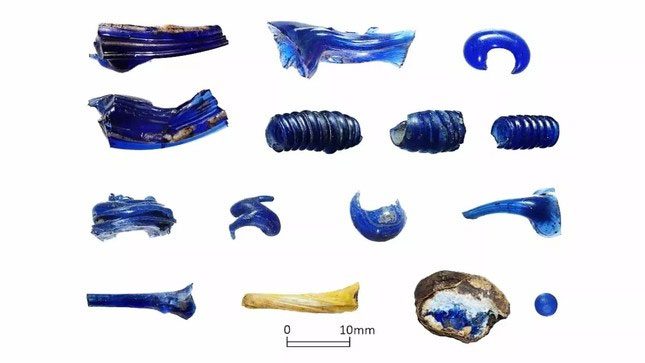Archaeologists have unearthed a 2,300-year-old glass workshop from the Iron Age, potentially one of the oldest glass workshops in the world.
Researchers in the Czech Republic have excavated the oldest known glass workshop north of the Alps at a site that may have been used for ritual purposes.

Collection of glass bracelets and beads discovered at Němčice in the Czech Republic.
This site is part of an early settlement known as Němčice, which thrived during the third and second centuries BCE, producing various intricate glass bracelets and beads.
During the excavation, archaeologists also uncovered over 2,000 gold and silver coins minted by Celts living in continental Europe, indicating that this location functioned as a trade center.
The research team also excavated a sanctuary, suggesting that Iron Age people conducted rituals there, according to a study published on June 29 in the journal Antiquity.
Researchers discovered Němčice while conducting excavations in 2002 and later surveys revealed sunken huts, bronze amulets, and coins scattered throughout the area.
Revealing Glass-Making Technology
The coins provide clues that suggest Němčice could be part of the “Amber Road”, a vast network in Central Europe connecting the Baltic Sea to the Mediterranean. However, it took more than 20 years before they found this glass workshop.
Although glass-making tools were not found at the site, researchers discovered a mix of finished and unfinished glass along with amber items, indicating that these were likely crafted on-site rather than imported from elsewhere.
Lead author Ivan Čižmář, an archaeologist at the Institute of Archaeological Heritage in Brno, Czech Republic, stated: “No one knows exactly how the Celts made these glass bracelets. Therefore, we are interested in anything that can tell us something about the production technology.”
In addition to the artifacts, researchers found a square structure resembling ancient buildings used for rituals, including a site called Sandberg in Austria, which was once occupied by the Celts.
Čižmář noted: “The presence of these potentially sacred features at Němčice indicates that this site was not just a trade and production center, but also a ritual center.”


















































